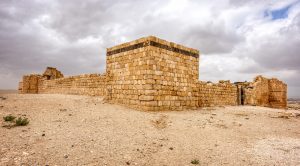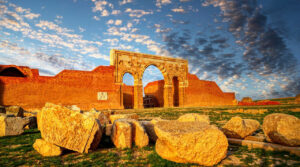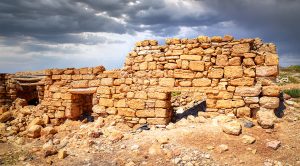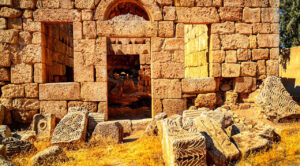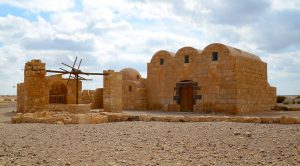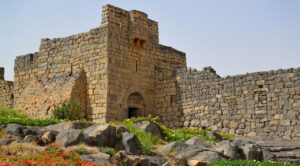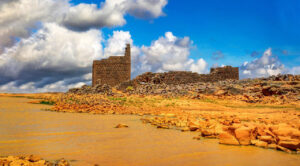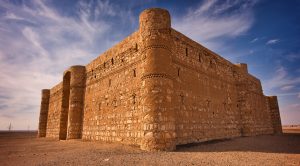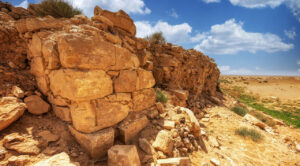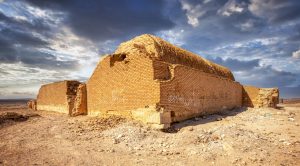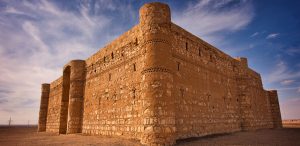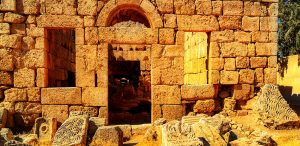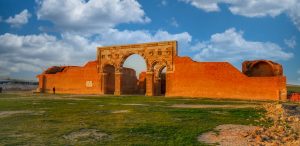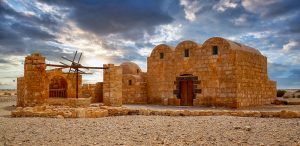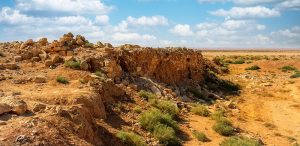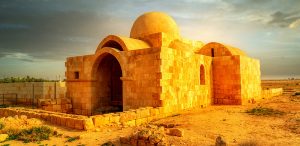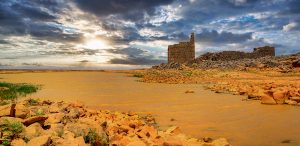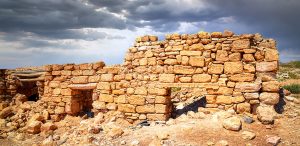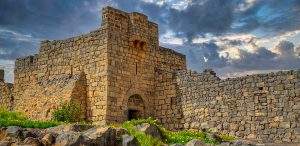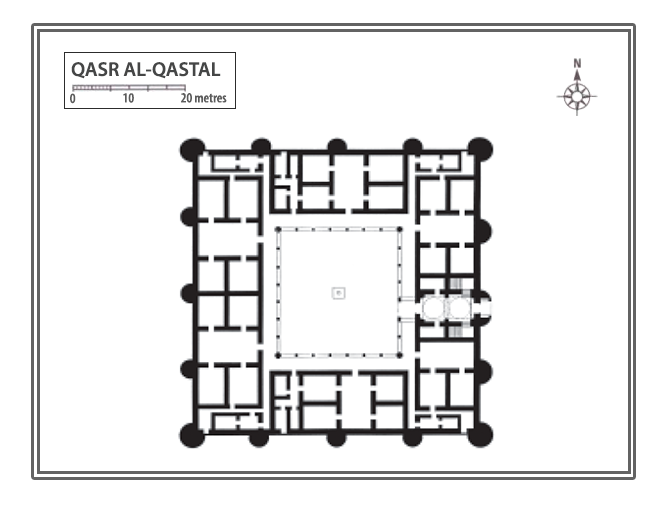Step back in time with a visit to Al-Qastal, one of Jordan’s most intriguing Desert Castles located just 5 km from Qasr Al-Mushatta. Originally established in the 8th century by the Umayyads and later renovated by the Mamluks, this ancient settlement offers a rich tapestry of history, architecture, and artistry.
Al-Qastal features a fascinating central palace constructed from impressively large limestone blocks. The palace was originally two stories tall, though only the lower section remains today. A vibrant courtyard is surrounded by rooms that once boasted intricate mosaic floors, remnants of which can still be admired.
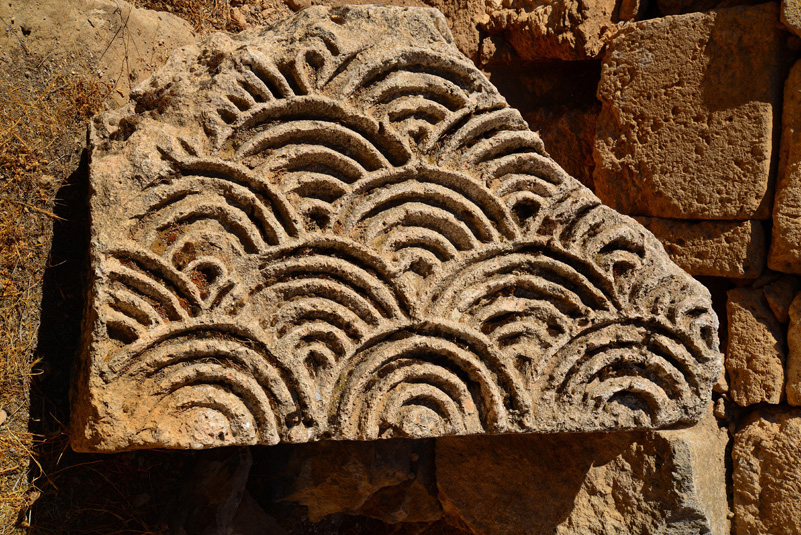
A short walk north reveals a historic mosque with a minaret—remarkable as the oldest surviving example from the Umayyad period. While its orientation toward Mecca is slightly unconventional, its enduring structure reflects the stonework technique seen in the palace.
Nearby, you’ll find traces of opulence in a bathhouse adorned with exquisite mosaics. The stunning art comes to life with vivid scenes of lions, prey, and delicate shading techniques, showcasing the exceptional skill of ancient artisans.
Further east lies a 400-metre-long stone dam, crafted to collect rainwater and capable of holding up to two million cubic metres. Wander through the surrounding area, and you’ll spot over 100 underground cisterns—an impressive feat of engineering.
Southwest of the palace, Al-Qastal’s cemetery is the earliest known Islamic burial site in Jordan. Intricately carved tombstones from the Umayyad and Abbasid periods can be viewed at the Madaba Archaeological Museum.
Though much of the site lies in ruins today, Al-Qastal remains a remarkable window into Jordan’s rich history. Whether you’re drawn by the striking mosaics, early Islamic architecture, or its vibrant past, this site is a must for any history aficionado or curious traveller. From the grand palace to the intricate bathhouse, every corner holds a story waiting to be discovered and explored. And with ongoing restoration efforts, there’s no telling what other secrets may be unearthed in this fascinating ancient city. So take your time, wander through its streets and imagine yourself transported back in time to a bustling hub of commerce and culture. Al-Qastal is more than just a collection of ruins – it’s a glimpse into Jordan’s past that will leave you awe-struck and inspired. Whether you’re an avid history buff or simply looking for a unique experience, Al-Qastal has something special to offer everyone who visits.
From its impressive stone structures to its intricate mosaics, Al-Qastal is a testament to the exceptional skill and ingenuity of ancient artisans. And while much has been lost to time, what remains is a treasure trove waiting to be explored. So pack your bags and prepare for a journey through one of Jordan’s most fascinating sites—the ancient Qasr Al-Qastal.
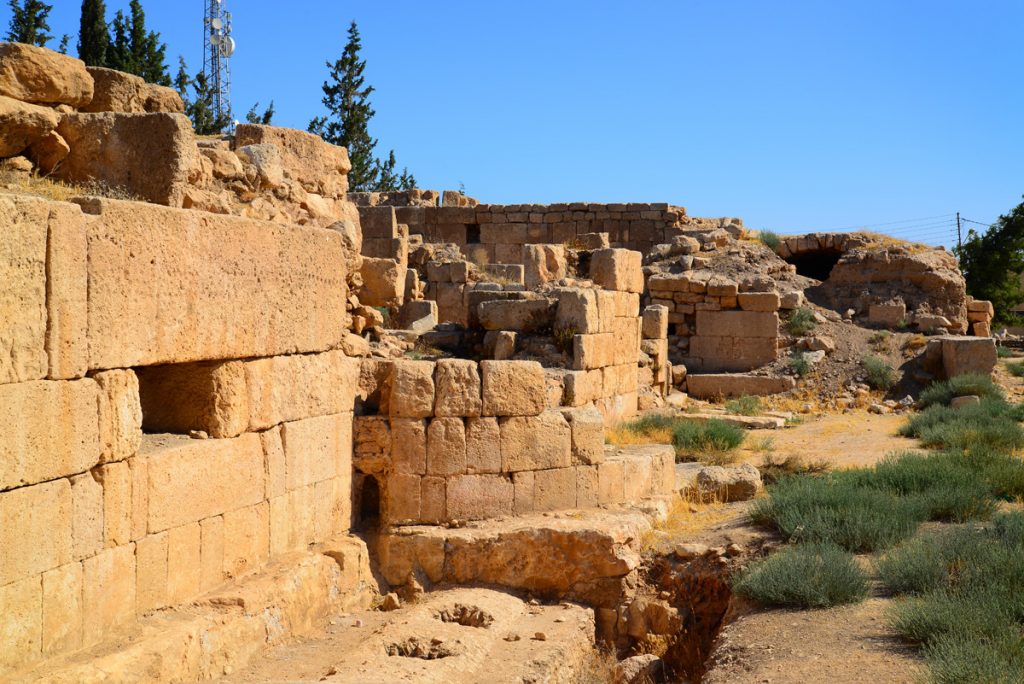
The Qasr al-Qastal complex offers a fascinating glimpse into the layers of history that have shaped the region. Textual evidence from the poet Kuthayyir ‘Azzah suggests that the complex was originally commissioned by Caliph Yazid bin Abd al-Malik of the Umayyad Caliphate, a dynasty renowned for pioneering architectural advancements in the 7th and 8th centuries. This prominence is further underscored by the fact that while the nearby Qasr Al-Mushatta remains an unfinished project, the Qasr al-Qastal complex was completed, potentially making it the oldest Umayyad construction in the area.
Under the Umayyads, the site likely served as a noble residence or a strategically located retreat amidst the region’s vast semi-arid landscapes. However, the passage of time brought profound changes. After the fall of the Umayyad Caliphate in 750 AD, tombstones from Al-Qastal reveal that it transitioned into use during the Abbasid era. This shift reflects the dynamic interplay of power in the region, as the Abbasids succeeded the Umayyads and left their mark on the site.
When the Abbasid Caliphate eventually fell, Al-Qastal experienced a brief period of abandonment before being revitalised under the Ayyubid and Mamluk dynasties in subsequent centuries. Small buildings dating back to this time indicate efforts to re-settle and repurpose the area, marking its enduring significance across eras.
Each layer of Al-Qastal’s history—from the grand ambitions of the Umayyads to its later use by the Abbasids, and finally its revival under the Ayyubids and Mamluks—tells a story of resilience, transformation, and cultural continuity. It stands as a timeless testimony to the architectural and civilisational legacy of the people who shaped its walls and spaces.


